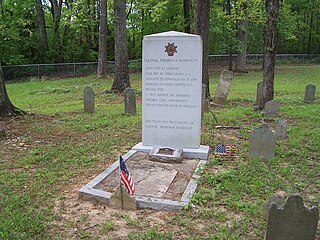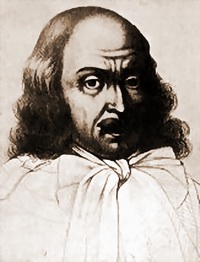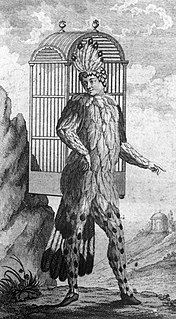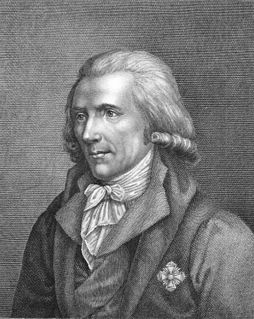 W
WJohann Georg Turmair, known by the pen name Johannes Aventinus or Aventin, was a Bavarian Renaissance humanist historian and philologist. He authored the 1523 Annals of Bavaria, a valuable record of the early history of Germany.
 W
WAgnes Bernauer was the mistress and perhaps also the first wife of Albert, later Albert III, Duke of Bavaria. Because his father, Ernest, ruling Duke of Bavaria at the time, considered this liaison with a commoner unbefitting his son's social standing, he clashed with his son over the matter and finally arranged to have Agnes condemned for witchcraft and drowned in the Danube in 1435. Her life and death have been depicted in numerous literary works, the most well known being Friedrich Hebbel's tragedy of the same name and the folk musical Die Bernauerin by the composer Carl Orff.
 W
WBerthold of Garsten, O.S.B., also known as Berthold de Rachez, was a German Roman Catholic priest and a monk of the Order of Saint Benedict. He was a noted abbot of a major monastic house in the region, and is revered for the holiness of his life by the Catholic Church.
 W
WFerdinand of Bavaria was Prince-elector archbishop of the Archbishopric of Cologne from 1612 to 1650, as successor of Ernest of Bavaria. He was also prince-bishop of Hildesheim, Liège, Münster, and Paderborn.
 W
WFrederick Hambright was a military officer who fought in both the local militia and in the North Carolina Line of the Continental Army during the Revolutionary War. He is best known for his participation in the Battle of Kings Mountain in 1780. Serving as a statesman early in the Revolution, Hambright joined the War in 1777, ranked a lieutenant colonel in a local militia. His early actions were limited to occasional checks on Loyalist groups. This changed in 1780 with Hambright's important role at the Battle of Kings Mountain, which occurred near his lands in the newly formed Lincoln County, North Carolina. Hambright was commended for his bravery during the battle, though suffering a wound which forced him to permanently resign from military service.
 W
WJoseph Ritter von Hazzi was a Bavarian official.
 W
WJohann Schmidlap of Schorndorf was a 16th-century Bavarian fireworks maker and rocket pioneer.
 W
WMatthias Klostermayr, also known as Bavarian Hiasl, was a German outlaw, poacher and social rebel who has come to be described, particularly in accounts written in the English-speaking world, as the Bavarian Robin Hood. A native of the municipality of Kissing near Augsburg, Bavarian Hiasl became an outlaw, first as a poacher and ultimately as the Robin Hood-like leader of a gang of robbers who, during the 1760s, plundered, sacked and robbed in the region around Munich, Augsburg and Swabia. Although he was captured and put to death by being broken on the wheel in 1771, his mythical accumulated treasure has never been found, and legends surrounding its purported whereabouts have placed it somewhere near one of his hideouts, in an old cave in Kuchelschlag Wood or on Jexhof Farm.
 W
WLeidrad was the bishop of Lyon from 797 and its first archbishop from 804 until 814. He was a courtier of Charlemagne before he was a bishop. As bishop, he helped resolve the adoptionist controversy. He also began a programme of building and renovation in his diocese, turning Lyon into a centre of learning. Of his writings, two letters and a treatise on baptism survive.
 W
WFranz Freiherr von Mercy, Lord of Mandre and Collenburg, was a German general in the Thirty Years' War who fought for the Habsburg side.
 W
WJohann Philipp Palm or Johannes Philipp Palm was a German bookseller and a strong anti-French agitator and freedom fighter executed during the Napoleonic Wars at Napoleon's orders.
 W
WJohann Pfeffinger was a significant theologian and Protestant Reformer.
 W
WAnton Raaff was a German tenor from Gelsdorf near Bonn.
 W
WEmanuel Schikaneder, born Johann Joseph Schickeneder, was a German impresario, dramatist, actor, singer, and composer. He wrote the libretto of Wolfgang Amadeus Mozart's opera The Magic Flute and was the builder of the Theater an der Wien. Peter Branscombe called him "one of the most talented theatre men of his era".
 W
WFranz Ignaz von Streber was a German numismatist and theologian from Reisbach, Lower Bavaria.
 W
WSir Benjamin Thompson, Count Rumford, FRS was an American-born British physicist and inventor whose challenges to established physical theory were part of the 19th-century revolution in thermodynamics. He served as lieutenant-colonel of the King's American Dragoons, part of the British Loyalist forces, during the American Revolutionary War. After the end of the war he moved to London, where his administrative talents were recognized when he was appointed a full colonel, and in 1784 he received a knighthood from King George III. A prolific designer, Thompson also drew designs for warships. He later moved to Bavaria and entered government service there, being appointed Bavarian Army Minister and re-organizing the army, and, in 1791, was made a Count of the Holy Roman Empire.
 W
WJohann Tserclaes, Count of Tilly was a field marshal who commanded the Catholic League's forces in the Thirty Years' War. From 1620–31, he had an unmatched and demoralizing string of important victories against the Protestants, including White Mountain, Wimpfen, Höchst, Stadtlohn and the Conquest of the Palatinate. He destroyed a Danish army at Lutter and sacked the Protestant city of Magdeburg, which caused the death of some 20,000 of the city's inhabitants, both defenders and non-combatants, out of a total population of 25,000.